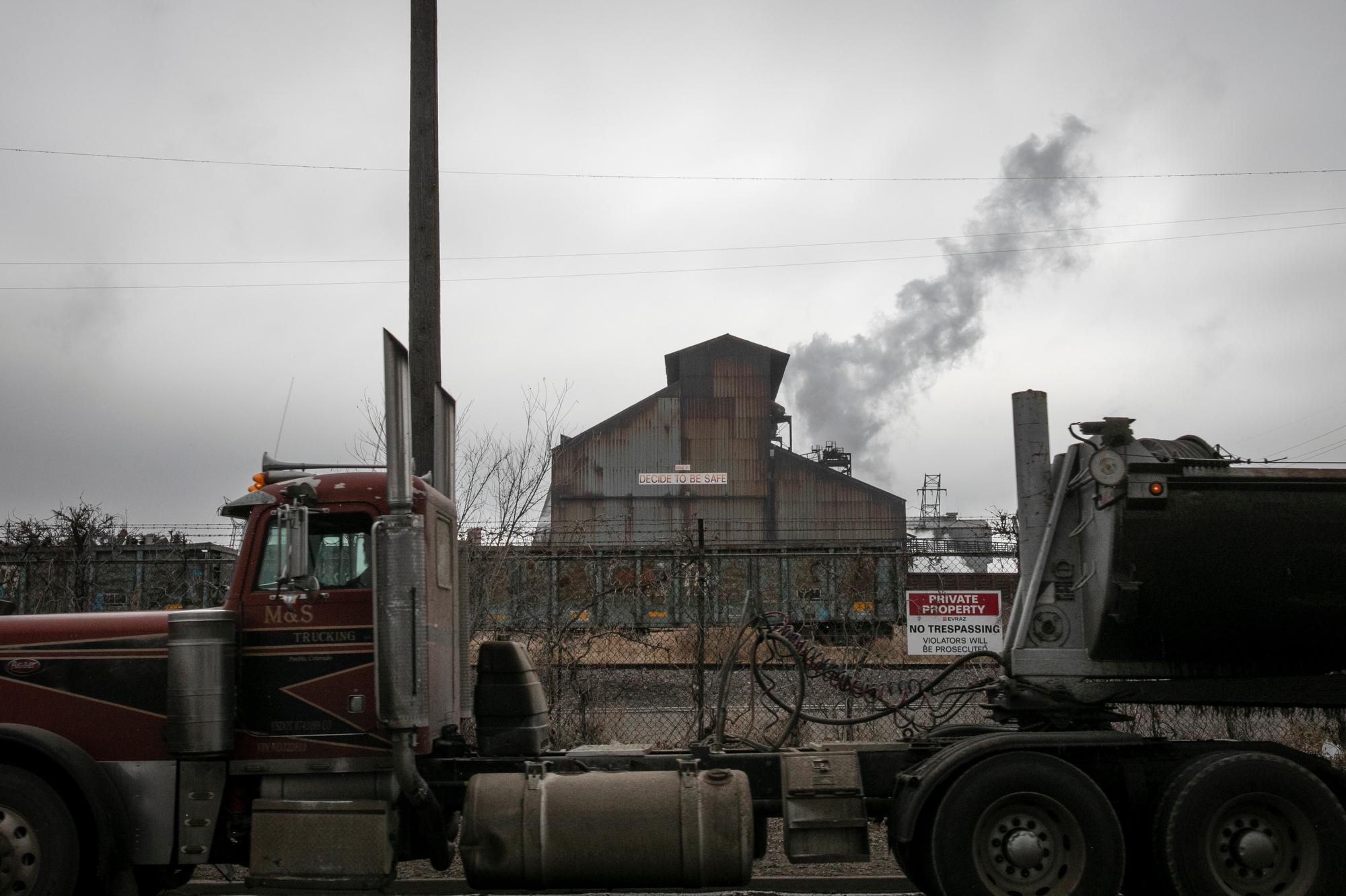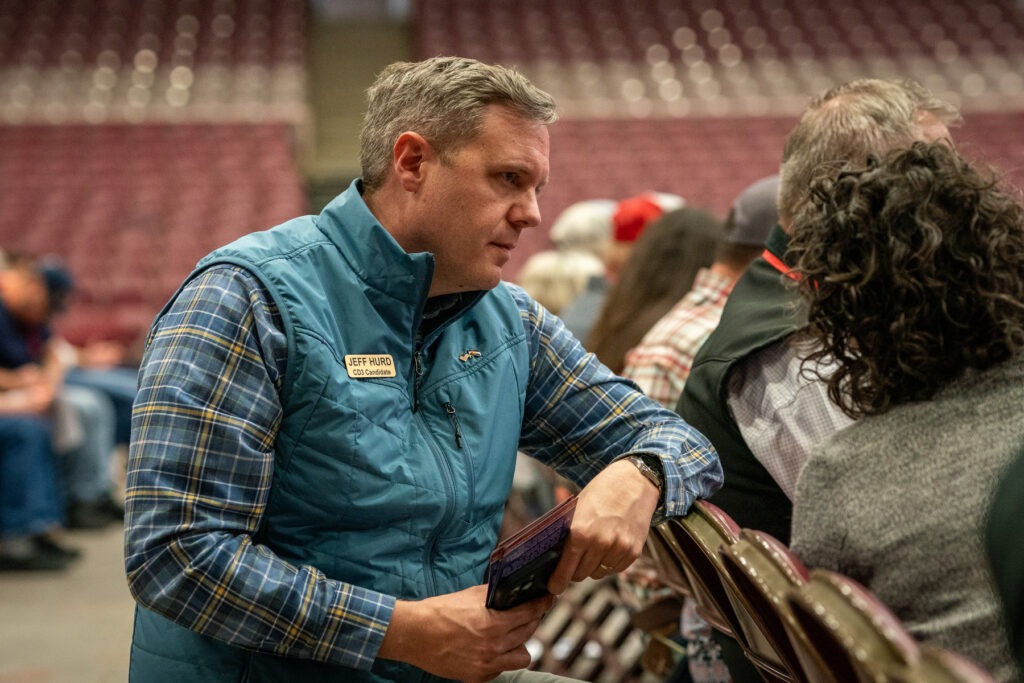Smoke-filled skies. Record-breaking heat. Brittle forestland closed to the public. And yet, for some Colorado residents conserving water remains optional, even as the state grapples with widespread drought and wildfire.
Emerald lawns along the Front Range belie the fragility of Colorado's water supply, which hinges on a springtime mountain snowpack that doesn't always come. But even as drought spreads and wildfires and extreme heat signal that Colorado could face water struggles in the years ahead, imposing water restrictions remains a controversial step for many utilities. When it comes to limiting water use, drought becomes a political force as utilities weigh the specter of longterm water shortages against the repercussions of enacting restrictions.
Imposing water restrictions can impact investment in a community and deter tourism, said Reagan Waskom, the director of the Colorado Water Institute. Utilities are also often wary of limiting water to customers who have invested in landscaping, and feel obliged to deliver a product to residents who have paid for it.
That's why no two utilities are likely to have the same approach to water restrictions, Waskom said.
"It's not a simple formula that says Pueblo is on restrictions therefore Colorado Springs should be on restrictions," he added. "Citizens have paid for that water with their interest fees and (utilities) are going to give it to them."
Waskom used Pueblo as an example. The city is not on restrictions.
Colorado's drought, meanwhile, continues to worsen.

In the last week of June, temperatures in Fort Collins, Denver and Colorado Springs rose into the hundreds and, in some cities, broke all-time records. By mid July, 12 wildfires had ignited in Colorado, triggering evacuations for thousands of people and blanketing cities in smoke. Nearly 80 percent of the state is experiencing some level of drought, and in some regions, conditions rival the extreme dry periods of 2002 and 2012, according to the Nebraska based National Drought Mitigation Center, which tracks drought conditions across the country.
In Colorado, drought has been spreading since last fall. The federal government has declared a natural disaster due to drought in 37 of Colorado's 64 counties, making farmers and ranchers in those areas, which include El Paso County, eligible for federal aid. Limited water has prompted ranchers to sell cattle and farmers to halt planting of some acreage, and state officials expect crops to fail as the growing season continues, according to a June drought update from the Colorado Department of Natural Resources.
Massive water shortages are not a distant threat for Colorado. In 2015, at Gov. John Hickenlooper's behest, the state completed a unified water plan meant to help stave off water shortages by mid century. The Front Range cities posed a main challenge in the water plan: none of Colorado's largest cities rely solely on water from their backyards, instead pumping it over or through mountains many miles away. Colorado Springs, for instance, gets 60 percent of its water from the west side of the Continental Divide; Denver also gets around half of its water from the Western Slope. Colorado also has to deliver downstream. The state's rivers -- including the Colorado, Arkansas and South Platte -- are crucial water sources for 18 states and Mexico.
Thus far, this year's drought has had minimal impact on Colorado residents when it comes to water use during the summer. Some cities, like Manitou Springs, have mandatory water restrictions that govern when residents can water; in other cities, however, like Colorado Springs, residents are merely encouraged to use water wisely.
Nonethless, most older Front Range cities – including Pueblo, Colorado Springs, Denver and Fort Collins – have priority access to water that ensures they will make it through a dry summer. But major utilities are likely more concerned about a drought that stretches for years, a prognosis that is difficult to get.
Colorado Springs Utilities, which brings water to nearly 460,000 customers in the Pikes Peak region, has opted to waive water restrictions this year thanks to three years worth of water stored in mountain reservoirs, said Abby Ortega, the water resources manager for the utility.
"Because we are coming off a fairly wet period and most water providers and agricultural users across the state have higher than normal storage levels, that provides a little bit of resilience to the drought," said Ortega.

Despite local drought, Ortega expects summer water use to make only a small dent in water reserves, bringing them down to two and half years of water in storage after the summer's end. But the utility continually watches long term drought forecasts and will be ready to adapt its water use if the current drought extends.
Denver Water, which serves 1.4 million people in the Denver metro area, is taking a similar approach. The utility has imposed its regular annual summer watering guidelines, which recommend that customers limit water use to three times a week and avoid watering during the heat of the day.
While the drought of 2018 has yet to reach the levels of 2002 and 2012 – two recent historic droughts that loom on the record – water use this year has risen to a five year high, said Greg Fisher, manager of demand planning for Denver Water.
"Water use is rivaling each of those very hot, dry years," Fisher said. "If you look at the last five years – between May 15 and mid July – we are up about 20 percent in use this year."
That's still better than Denver's water use in 2012 and 2002, which was about double current use, Fisher added. But high water use is a sign that the drought of 2018 is hotter than normal.
A handful of smaller Front Range communities have also opted for limited water restrictions – including Manitou Springs and Monument in the Pikes Peak region. But for many utilities it has been years, and in some cases nearly two decades, since they have enforced mandatory water restrictions.
"The big question that everybody is wrestling with is - are we just in a temporary dry period, or are we just becoming drier... It's a complicated question to answer."
Water reserves in high mountain reservoirs will carry residents of major Colorado cities through the summer, but they ultimately are a short term insurance policy for a future that could be increasingly dry, said Russ Schumacher, the state climatologist.

"If the drought persists into another year, then the story starts to change," said Schumacher. "The bottom line is we are in part of the country where water is always an issue and rarely do we have way more than we need."
Colorado researchers are trying to determine if the state's latest drought cycle has become the new normal, a climate shift that could drastically impact growing Front Range cities, downstream farmers and neighboring states. The last severe drought, in 2012, cost Colorado $409 million in agricultural revenue, according to research in the state's water plan.
A reality of drought, no matter how long it lasts, is that it will hurt Colorado's economy, something state officials will face in the coming months and years.
"The big question that everybody is wrestling with is – are we just in a temporary dry period, or are we just becoming drier," said Schumacher. "It's a complicated question to answer."








